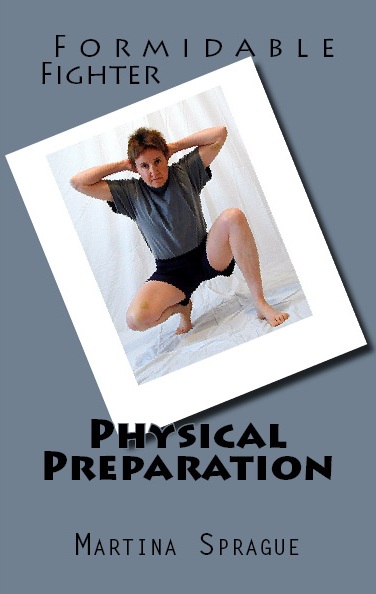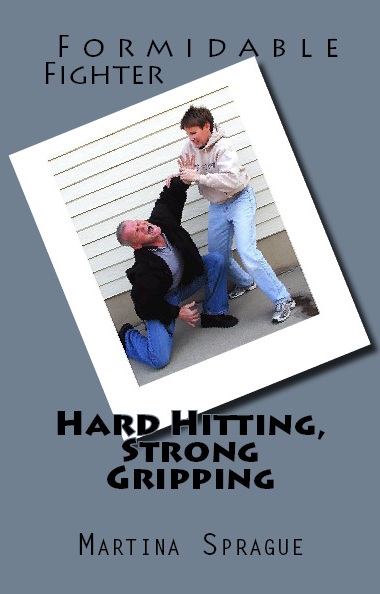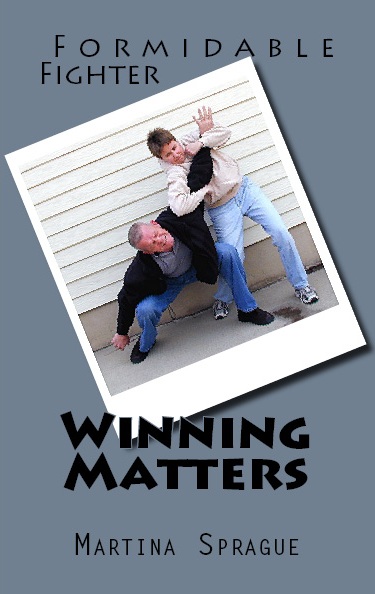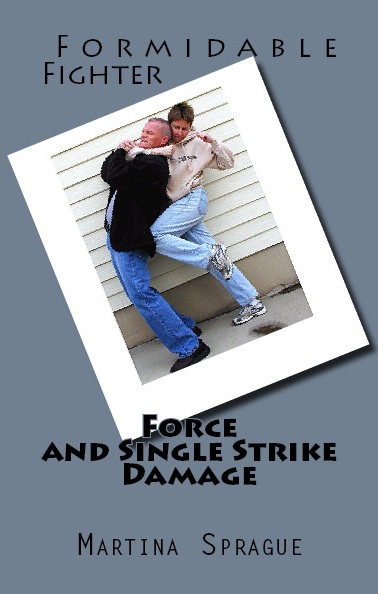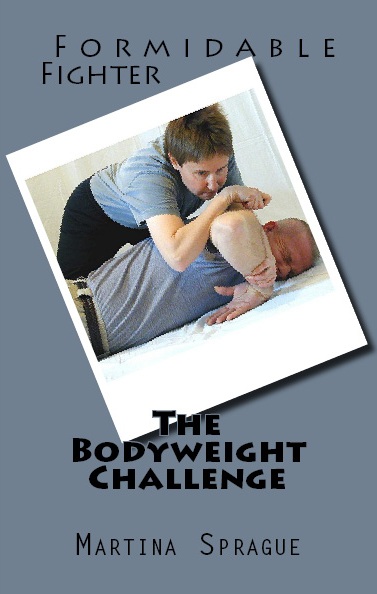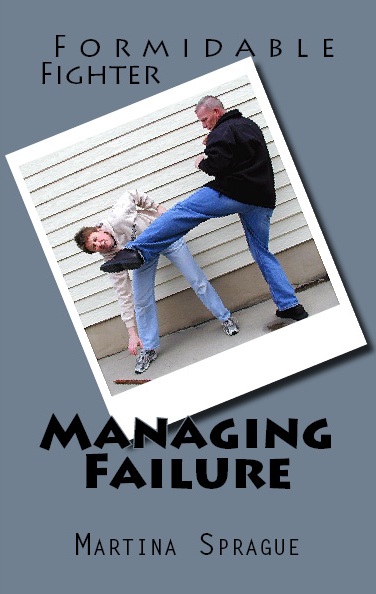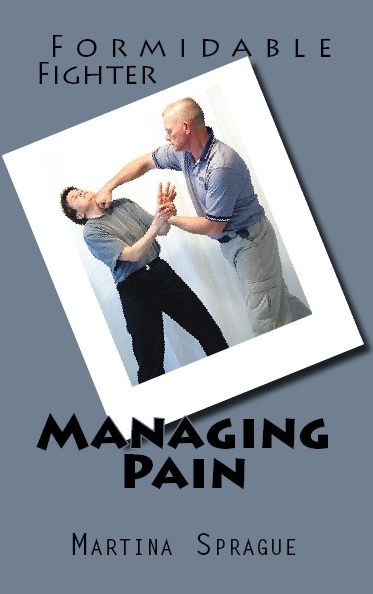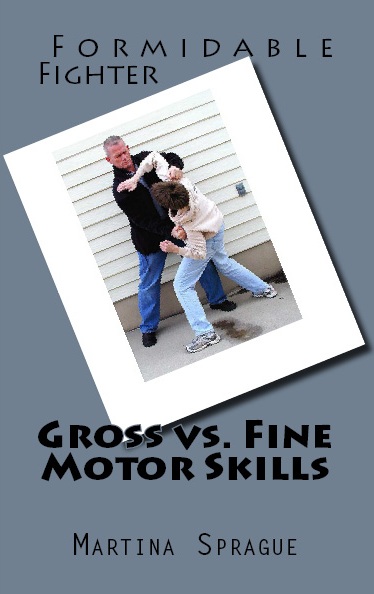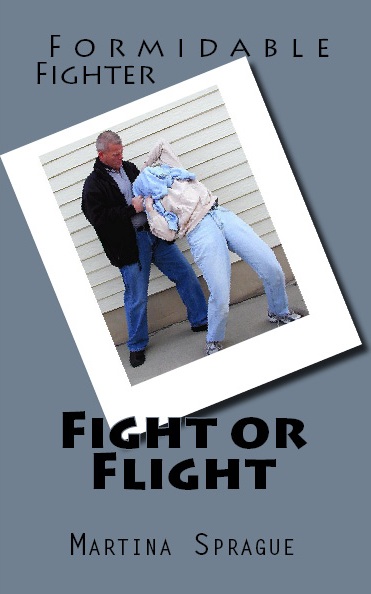 fax (000) 000-0000
fax (000) 000-0000
toll-free (000) 000-0000
Formidable Fighter: The Complete Series
The Formidable Fighter series comprises fourteen shorter books for martial artists desiring to learn the concepts that create formidable fighters in the training hall, competition arena, and street. Each book can be purchased separately in print or electronic format.
Mustering the Forces
A successful martial artist has the physical strength and mental
tenacity required to gain the respect of a bigger opponent.
To achieve this kind of physical and mental strength, you must train
with intent.
Start by avoiding weak efforts. Don’t
cheat on the exercises regardless of whether they comprise pushups,
squats, jumping jacks, bag work, forms practice, sparring, or just
coming to class motivated and ready to go.
Dig down deep and you will discover that you have the mind, heart,
and fortitude to succeed.
This book sets the stage for the training that is to follow, so that
you can step up and break the barrier that prevents you from
reaching your full potential. Since the advice is not style specific
but explores the underlying concepts of personal combat, it is
applicable to students of most martial styles.
Physical Preparation
Outlasting your opponent in competition or learning to combat a
bigger person under stress requires hard training. You must be
physically fit, strong, and powerful. Supplemental strength training
in addition to your martial arts training will help you develop the
toughness you need to equalize or overcome the power of a bigger
opponent. Strength also helps you win in competition and establishes
your reputation as a formidable and competent student of the
fighting arts.
When you are physically unfit, your martial arts techniques become
sloppy, slow, and powerless. You should therefore value physical
strength and fitness as highly as you value good martial arts
techniques. Your supplemental strength training should complement
the martial art you are studying; you should never lose focus on the
fact that you are training for a combat art and not just for getting
into better shape.
Hard Hitting, Strong Gripping
Aggressiveness is a strong character trait that is to be embraced as
the core value of any respectable martial artist. It is not
something to be avoided or ashamed of. Aggressiveness does not
equate to cruelty or misuse of skill. Although it is possible for a
smaller well-trained and intelligent person to prevail against a
bigger and stronger opponent, or against a not-as-smart adversary,
it is a tough uphill battle. A force that is strong and focused is
difficult to defeat. Willpower and intent to avoid domination by
others may therefore be the ultimate live-saving strategy. You will
increase your ability to hit hard when you practice hard-hitting
impact techniques against dead targets, such as mitts, bags, and
boards. But a problem is that dead targets don’t hit back. Timing,
chaos, and ability to control fear and pain must therefore be
practiced against a resisting partner who returns the offense.
Whether training for competition, a general education in the
fighting arts, or realistic combat at close range, to gain an edge,
you must train with intent and intensity.
Winning Matters
The martial arts have a two-fold agenda: to prepare you to
participate in tournaments (or sports), and to prepare you to
participate in real life scenarios. This split focus might be the
prime element that distinguishes the martial artist from other
sports participants who are preparing to run a marathon, go to the
Olympics, or win a hockey match but are not concerned with issues of
life and death. So to those who say that winning and losing don’t
matter, that your only competitor is
yourself, and that you should strive to be the best that you can be,
I say, Baloney! In struggles of life and death,
winning matters. Winning is good for the spirit even in martial arts
simulations not involving life and death. In competition, too,
winning matters.
A central theme of martial arts training is resolve, the spirit to
win, which must shine not only in the real battle, competition, belt
promotion, demonstration, or teaching endeavor, but in all the
training that prepares you for this test. The techniques you learn
are your backbone, your foundation for building greater skills. Your
effectiveness is measured through a combination of theoretical
knowledge of technique and ability to use these techniques.
Pressing the Attack
In martial arts competition or on the street one fighter normally
dominates the other; it is how fights are won. Once you start
viewing the arena as yours and yours alone, your mindset should be
to press the attack. Offense is essential because only offense can
hurt your opponent enough to demolish his fighting spirit and force
him to retreat. Any good offensive strategy consists at least of
some forward movement where momentum helps you take advantage of
your opponent’s retreat. Pressing the attack helps you establish
command presence by positively demonstrating that you control the
arena. Pressing the attack is not about displaying uncontrolled
rage, however. Rather, it means that you resolve to stay a step
ahead in strategy and tactics at all times. Strategy involves a
calculating mind, good defense, and even retreat at times. The
winning strategy is this: Think offense; think forward; think one
more step.
Force and Single Strike Damage
When you attempt to break a board and fail, there is a simple
solution: Hit harder. Although it is tempting to engage in such
elusive concepts as “striking through the target” and “extending ki,”
understand that a board breaks only under the stress of a specific
amount of force which can be pre-calculated. The lesson is that no
matter what you choose to call the force, you cannot expect to do
damage unless you strike straight. No matter how powerful, attacks
fail when the direction of force is misunderstood or misapplied.
This book focuses on the single strike or single technique concept
to end a fight, primarily on the street where you are looking for a
quick and decisive victory over your adversary. The focus is on
overwhelming force resulting in disruption and defeat.
Force Escalation
The study of the martial arts encompasses more than self-defense for
a smaller individual against a bigger opponent on the street. Many
arts emphasize tournament competition as well as the more noble idea
of subduing an opponent without hurting him or her by only taking
the fight to the level necessary to ensure safety. The inherent
chaos of physical confrontation sometimes makes it difficult to end
a fight with a single strike. The martial arts strategist considers
how one strike or technique leads to another until the final blow
that ends the fight can be launched. We call this type of strategy
force escalation. Although a defensive technique such as a block may
help you avoid your opponent’s first strike, it does little to end
the confrontation. You cannot win a fight in the training hall,
ring, or street without offense. Remember that you are not just a
defender; you are an elite fighter, and you must know how to
dish it out as well as take it.
The Bodyweight Challenge
Weight
is important when engaged in a fight, and more often than not weight
works to your advantage. Luckily there are many ways in which you
can take advantage of the laws of physics to make yourself appear
heavier than you are; for example, by pushing your weight into an
opponent, spreading out on top of him, or pinning him to the floor
through the use of a sharp weapon. How you handle your weight may be
especially prevalent in ground battle, where you remain in close
contact with your opponent. Whether in the training hall or on the
street, you defeat your adversary by waging a decisive battle.
Strike with force and determination, press the attack, preselect
vulnerable targets, use sound scientific principles, and endure
until the end. There is no excuse for lacking strength, but if you
lack size you can still be powerful and win through the use of sound
body mechanics. The use of bodyweight is taught in most martial arts
classes, but applying these concepts consistently and with
determination requires effort in training.
Controlling the Counterattack
When there is chaos, the techniques you have mastered flawlessly in
the training hall don’t work as intended. They may work, but only
partially, and often not at all. Why? Because your opponent is not
cooperating, he or she is struggling to escape the onslaught of your
attack, and he is intent on winning the fight. The effectiveness of
a technique is always measured against the chaos of the attack. If
you can’t end the fight now, you can at least limit your opponent’s
ability to counterattack. You can buy time through intimidation
tactics and mental control, and maybe save yourself from further
assault. Striking or kicking seldom satisfies this need, however,
because strikes and kicks are generally not effective for
controlling your opponent’s movement. By contrast, techniques that
stifle movement generally stifle the opponent’s ability to
counterattack. These are the techniques explored in this book.
Managing Failure
We can learn a lot from failure. Failure, when studied, brings
enlightenment. One of the greatest pitfalls of group martial arts
training is failing to ask: “What can go wrong?” Combat in
any form or way is a potentially dangerous activity. There are only
you and your opponent on the field of battle, whether it is a mat in
the training hall, a ring in the center of a ten-thousand person
audience, or a dark back street somewhere near home or far away. The
years you have spent training in the martial arts have not made you
immune to failure. There is somebody out there who is better,
stronger, smarter, tougher, and more vicious than you. The years of
martial arts training under your belt have failed to make you
invincible. There is no guarantee that you will perform according to
textbook standard. At best a failed technique can cost you loss of
face; at worst it can cost you your life. The study of failure is
therefore an important part of your self-assessment.
Managing Pain
Strength, intent, tolerance to physical contact . . . these are
principles that condition you to be in charge, control the arena,
dominate your opponent, and win the fight. Good martial art training
strengthens your resolve; it sharpens your reflexes and makes you
tougher. Most of us can tolerate a great deal of pain, as long as we
can prevent our mental discomfort from sidetracking us. Physical
pain tolerance prepares you for mental pain tolerance. The moment
your physical pain threshold crumbles, so will your mental pain
threshold, and vice versa. This bit of knowledge can help you
survive a physical confrontation. Fighting is violent and training
in violence, to execute it and protect against it, is necessary in
order to
understand violence. Some people are naturally more tolerant of pain
than others. What is painful to me may not even faze you. A little
bit of pain in training can give you insight into what it is like to
be engaged in a physical confrontation, and teach you something
about your combat spirit and how far you are willing to go to
protect yourself and others. How you react to pain is an important
part of your self-assessment as a martial artist. Knowing how to
inflict pain on your opponent to make him do your bidding is equally
important.
Gross vs. Fine Motor Skills
Fear drains a person of his will to fight; it denies him the ability
to mount a sufficient defense. Fear reduces a strong man or woman to
inaction. Fear makes us cower in a corner, look for a way out, or
stand quietly at the sidelines unable to act. Fear eats our souls,
little by little. Fear steals from us our fine motor skills. When we
are afraid we can no longer poke an adversary in the eye, apply a
joint lock, or coordinate movement for a throw or takedown. The
conquest of fear lies in the understanding of fear and in its
acceptance. We drill the same techniques over and over in the
training hall, we drill thousands of times, we drill with the intent
of letting muscle memory take over in a dramatic situation, we drill
so that we can respond automatically and don’t have to think. The
idea is sound, but the failing element lies in the lack of realistic
stress in training. To understand fear, you must introduce
uncertainty, chaos, and pain to your training regimen. Not until
your body has experienced stress in a semi-realistic way can it
relate the techniques you learn to your performance in a real
encounter.
Fight or Flight
Awareness of yourself, the situation, and the surroundings is a big
part of self-defense and will help you avoid most situations that
can lead to physical conflict. When you are aware of a bad situation
developing, you can normally distance yourself before you reach the
point of no return. But sometimes you may not have the ability to
distance yourself because you lack the physical fitness required to
do so. Other times it may not be appropriate to distance yourself.
Sometimes you must decide whether to flee or stay and fight.
Sometimes it is not only necessary to stay and fight; it is the
right thing to do. Preparing to deal with physical violence involves
more than knowing the techniques. At what point do you really know
that you are under attack? If you counterattack too soon, you may be
doing damage to someone who intended you no harm; if you
counterattack too late, you may end up dead. Study and learn the
common cues that often precede battle.
Finishing the Fight
It ain’t over until it’s over, so, yes, you have to finish what you
start.
The key to finishing a fight is often in knowing how far to go. In
competition, you abide by established rules. You stop when your
opponent falls or the referee tells you to stop. In competition, you
leave it up to another to tell you when to stop. On the street, you
don’t have the luxury of that other. You are your own judge, and you
alone must decide when and how to finish the fight. When attacking
for survival, attack with the intent to finish the fight with the
first technique. Plan to take your opponent out immediately with as
much brutal force as possible. There should always be a follow-up
technique to clean up what the first technique failed to accomplish,
and to help ensure your survival.
It's been said that a fighter wins a fight, but a martial artist
does so with finesse. But sometimes finishing and winning with
finesse is not possible. Sometimes just finishing, regardless of how
it is done, is your ultimate aim.

